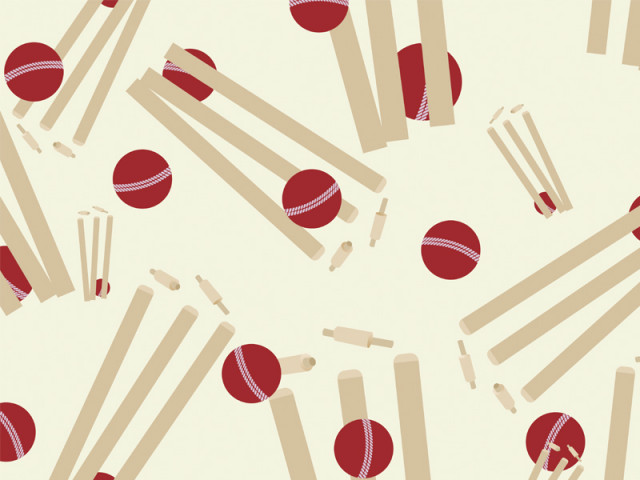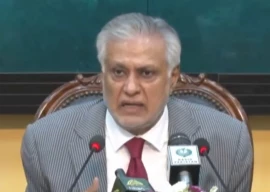
A silly at mid on, and a silly at mid off. All slightly off. Blazing noonday sun with temperatures in the forties. Fifteen on ground. Thirty thousand on stands. Nation on strike. Yield per man hour zilch. An inexplicable madness. Talk about suntan. That’s how it got started, actually. Those devious, ingenious Englishmen, all Lords and Ladies. The winter season left them
extra-white, so come summer and you had a legitimate excuse to stand around in the sun all day. So why did the West Indies take up Cricket? They got talked into it. Talk about a deep tan!
Not content with just standing around and making polite applause for a well struck ball, this lucratively unemployed elite built strategy into what was otherwise a very dull game. Cricket was never conceived as a sport, merely something to pass the time with while restoring some colour to the complexion. The planners of British Imperialism seized upon its potential as an effective training ground for future generations of leadership. The armer, the legbreak, the inswinger, the outswinger, the reverse swinger, the backfoot, the late cut, and last but by no means least, the googly. All this turned a simple game of stick and ball into a major experience in strategy, planning and belligerence. Each one of these three elements formed the core of an expansionist British policy.
The East India Company brought cricket to Calcutta. The fabled Eden Garden ground became the mainstay of cricket in the sub-continent. The few favoured locals were invited to join in a game. The grandeur and haughtiness of the British Raj attracted the nawabs and maharajas who eagerly took to cricket, often wagering large chunks of their domain and losing it to an unbeatable adversary. The locals just did not play well enough, nor did they have the mind for strategy. The Mughal empire was a thing of the past, and Mansoor Pataudi and Wasim Akram had yet to be born.
With the passage of time, and the trials and tribulations inherent in the learning process, Her Majesty’s colonial subjects broke loose from the shackles of ignorance and perfected a stratagem at the crease which bested and bewildered their colonial masters. Downunder to the rescue of the downtrodden. Don Bradman came of age, and mercilessly flogged the erstwhile floggers. The Lords and Masters were embarrassed beyond reason. Bodyline was born — and with it open hostility and naked aggression arrived on the sports field. It was ‘just not cricket’, and guess who coined this phrase?
The Aussies were both gifted and hard-working. As former convicts they carried a massive chip on their shoulders. The darkies perfected their own Caribbean nightmare, a high-speed projectile delivered from a massive height. The fathers of cricket had given birth to a ‘bastard’ flock which now reacted in dastardly fashion. Sobers, Kanhai, Lloyd, Richards threw painful spanners in the English works. The battle was carried to the English soil, and pretty soon the only saving grace left for the tormented erstwhile masters was the intrinsic majesty of the ground at Lords and the Oval. The English love for tradition kept their selectors in a high state of inebriation. They were a lordly, honorary class who made their choices through the haze of pre-lunch cocktails. The end product was usually a team in a hurry to get off the field.
In the subcontinent, the spirit of a newly-acquired independence caused the nawabs to play alongside the less fortunate. The result was remarkable, and a further pain in the English rear. The Indians and Pakistanis drew their line of descent to the most ancient of civilisations. In their heritage lay proud dynasties. They were born to rule, but alas had spent two hundred years playing second fiddle. This may not have constituted as large a chip as the Aussies carried, but it was sufficient to rekindle their desire to excel.
The forces at work on cricket in the modern period of the game have pulled it apart at the seams. Kerry Packer showed the boys their true worth. The cricket boards went overboard trying to rectify the situation, but proved to be poor crisis managers. South Africa added its two bits to an already smouldering situation. Black was back and the bottom-line looked good! England changed four captains in a season, and Immie, the Khan-e-khanan from Pakistan, became larger than the game and life itself. Television has brought about a quantum transformation in the social and financial dynamics of cricket. The epicenter of cricket has shifted decisively to the subcontinent with its billion plus cricket-crazy individuals that guarantee the kind of television box office success that the traditional bastions of cricket could never dream about. Added to this is the fact that the subcontinent’s cricketers have astounded and confounded the very best in the world, and risen to the top of the world rankings. While talk of racism remains impolite, the fact can no longer be ignored that the so-called white societies with their pervasive control over the media, have deliberately targeted with intent to tarnish the leading lights of the subcontinent, specially its cricketers. Whether it was ball-tampering or the current allegations of match fixing, the Pakistani and Indian role models have borne the brunt of the assault, and been hung, drawn and quartered by a media trial based on conjecture.
With the subcontinent playing host to the World Cup once again, conditions are fertile for ‘sensational disclosures’ that will attempt to take down our best and brightest, and the scandal mongers are champing at the bit. Given the foot-in-mouth disease raging in epidemic proportions at the top levels of cricket management in Pakistan we had best hunker down in anticipation of the barrage of bouncers to be delivered off the field.
Published in The Express Tribune, Sunday Magazine, March 20th, 2011.


















COMMENTS
Comments are moderated and generally will be posted if they are on-topic and not abusive.
For more information, please see our Comments FAQ